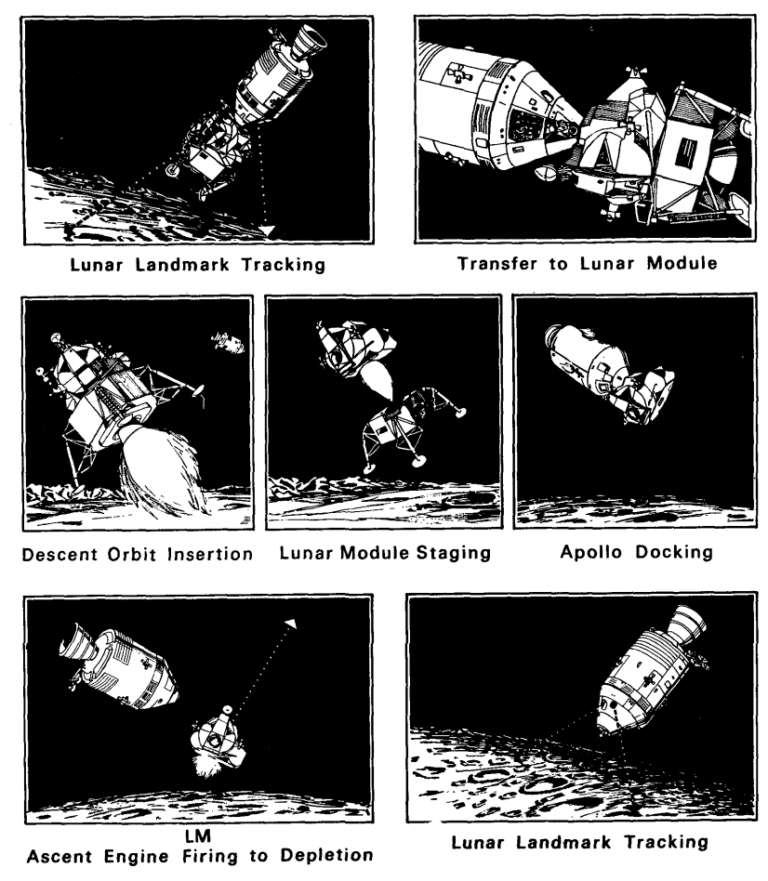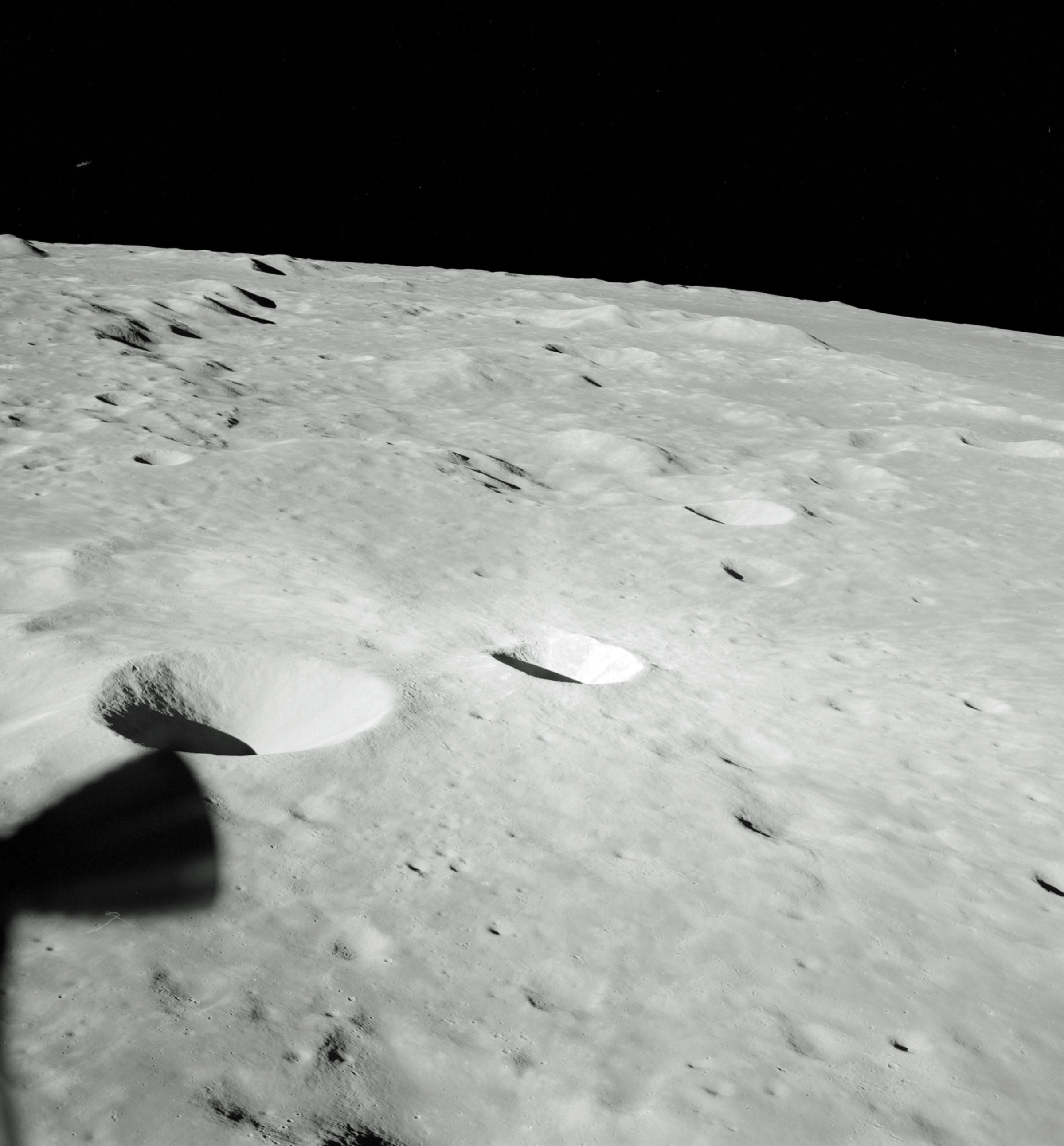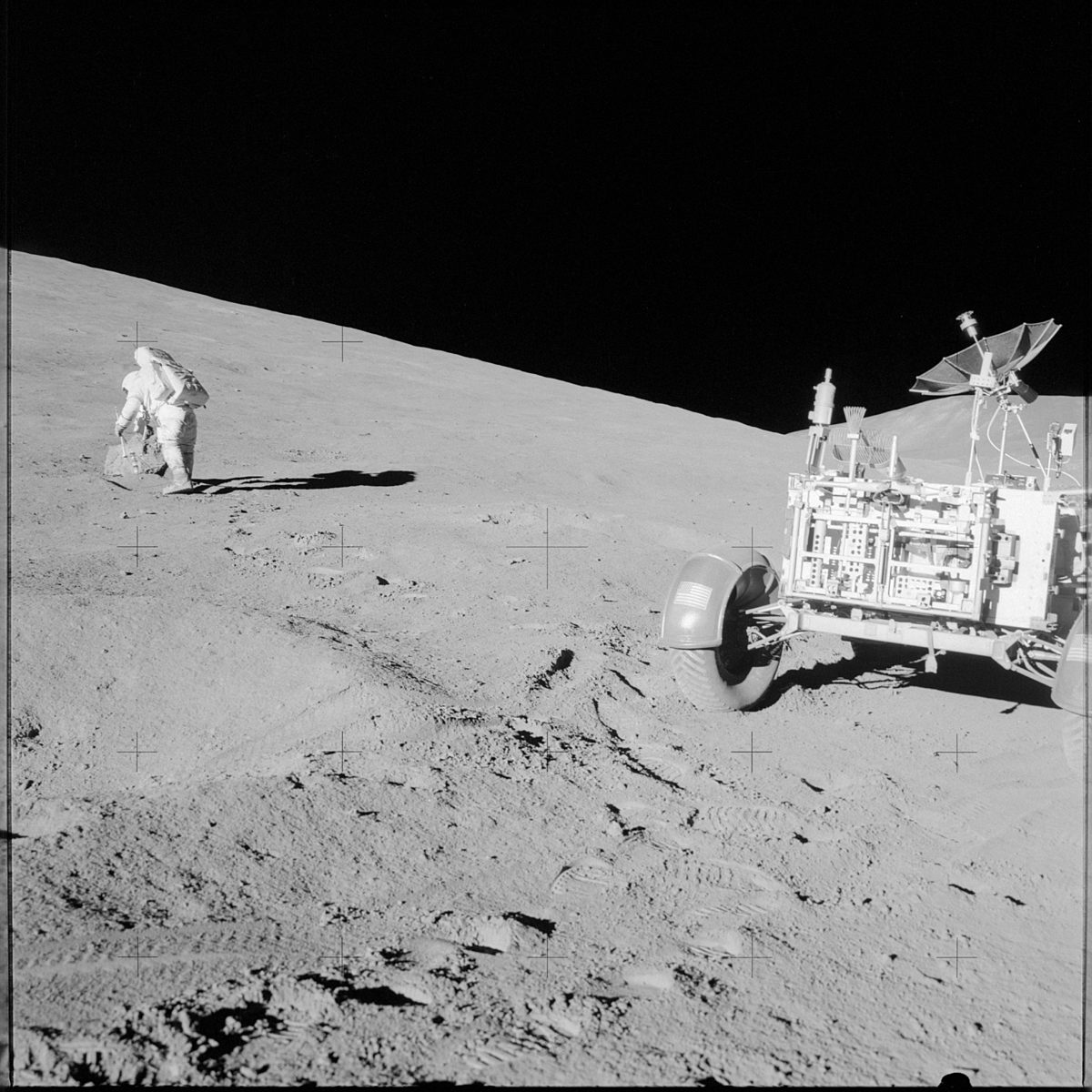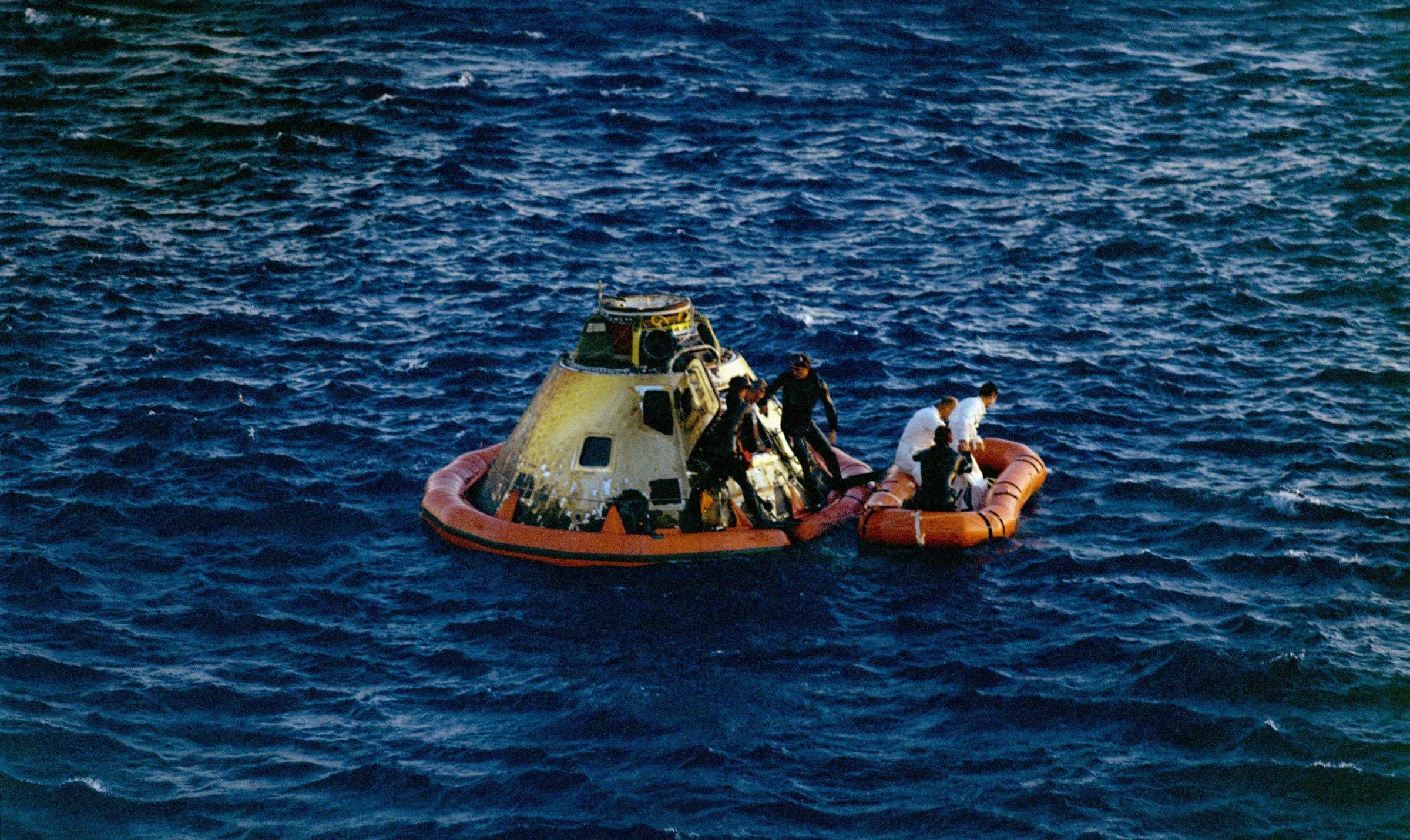Apollo 10 was the dress rehearsal for humanity's first Moon landing. It successfully demonstrated all major objectives of the upcoming Apollo 11 mission except the landing and moonwalk itself. Expanding on tests conducted in Earth orbit for Apollo 9, astronauts brought a fully functional lunar module to the Moon and flew it within 16 kilometers of the surface, photographing candidate landing sites in Mare Tranquillitatis.

The mission began on 18 May 1969 with the first and only Saturn V launch from Kennedy Space Center's pad 39B, as preparations were already underway at pad 39A to launch Apollo 11 in 2 months. Astronauts Thomas Stafford, John Young and Gene Cernan arrived safely in Earth orbit, re-lit their Saturn V upper stage booster, and blasted away from Earth towards the Moon. They arrived in orbit on 21 May.

A day later, Stafford and Cernan boarded the lunar module and undocked, leaving Young alone in the command module. The lunar module descent stage engine fired for 27 seconds, dropping Stafford and Cernan into an orbit of 15.6 by 113.5 kilometers above the Moon. Approaching the surface, they tested their spacecraft's landing radar, which would be critical for the Apollo 11 landing. They jettisoned the descent module, fired the ascent module engine, and rejoined Young and the command module in a higher orbit, simulating a return from the lunar surface.

Historians and space enthusiasts have since debated whether Stafford and Cernan could have bucked NASA protocol and flown the final 15.6 kilometers to land on the Moon. Cernan later said that the ascent module was under-fueled to discourage the crew; NASA was also still optimizing the lunar module engines and testing the computer-assisted landing system back on Earth. In any case, the crew was not carrying equipment for a moonwalk.

The three astronauts spent the rest of their time in orbit tracking lunar landmarks and imaging the surface. They fired their service module engine to return home on 24 May and splashed down in the Pacific Ocean on 26 May, where they were retrieved by the USS Princeton.
Throughout the mission, the crew conducted several live color TV broadcasts, giving the world an in-depth look at conditions inside an Apollo spacecraft. Apollo 10 was also memorable due to the crew choosing the call signs Snoopy and Charlie Brown for the lunar module and command module, respectively, which led to their adoption as unofficial NASA mascots. To this day, NASA offers the Silver Snoopy award for employees and contractors who make outstanding contributions to mission safety.
Apollo 10 Timeline
| Event | Time (UTC) | Date |
|---|---|---|
| Liftoff | 16:49:00 | 18 May 1969 |
| Earth orbit insertion | 17:00:53 | 18 May 1969 |
| Translunar injection | 19:28:20 | 18 May 1969 |
| CSM separation from Saturn V upper stage | 19:51:42 | 18 May 1969 |
| CSM docked with LM/Saturn V upper stage | 20:06:36 | 18 May 1969 |
| CSM/LM separation from Saturn V upper stage | 16:45:00 | 18 May 1969 |
| LOI burn | 20:44:54 | 21 May 1969 |
| Stafford and Cernan enter LM | 15:51 | 22 May 1969 |
| LM undocking | 19:00:57 | 22 May 1969 |
| LM descent burn | 17:48:00 | 22 May 1969 |
| LM radar acquisition of surface | 21:21:22 | 22 May 1969 |
| LM closest approach to surface | 21:40:33 | 22 May 1969 |
| LM ascent stage/descent stage separation | 23:34:16 | 22 May 1969 |
| LM ascent burn | 23:44:02 | 22 May 1969 |
| CSM/LM docking | 03:11:02 | 23 May 1969 |
| LM ascent stage jettisoned | 05:13:36 | 23 May 1969 |
| Transearth injection burn | 10:25:28 | 24 May 1969 |
| CM/SM separation | 16:22:26 | 26 May 1969 |
| Entry interface | 16:37:54 | 26 May 1969 |
| Drogue parachute deployed | 16:46:18 | 26 May 1969 |
| Main parachute deployed | 16:47:05 | 26 May 1969 |
| Splashdown | 16:52:23 | 26 May 1969 |
| Crew onboard recovery ship | 17:31 | 26 May 1969 |
"They are down there among the rocks, mumbling about the boulders and things right now."
—John Young, updating Mission Control on the status of Tom Stafford and Gene Cernan
Apollo 10 Cost
NASA estimated the following direct costs for Apollo 10. Full costs of the Apollo program can be found on the "How Much Did the Apollo Program Cost?" page.
| original $ | inflation adjusted $ | |
|---|---|---|
| Command & Service Module | $55 million | $463 million |
| Lunar Module | $40 million | $337 million |
| Saturn V Launch Vehicle | $185 million | $1.6 billion |
| Operations | $70 million | $589 million |
| Total | $350 million | $2.95 billion |
Inflation adjusted to 2019 via NASA's New Start Index (NNSI). Source: "History of Manned Space Flight." February 1975. NASA Kennedy Space Center. Located in NASA HQ Historical Reference Collection, Washington, D.C. Record Number 18194. Box 1.
Resources
Project Apollo
Starting with Apollo 7 in 1968 and culminating with Apollo 17 in 1972, NASA launched 33 astronauts on 11 Apollo missions. Twelve humans walked on the Moon.


 Explore Worlds
Explore Worlds Find Life
Find Life Defend Earth
Defend Earth



